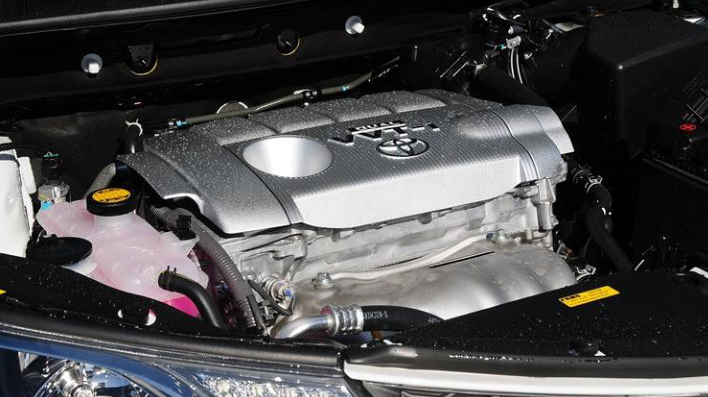I. Definition of Knock Sensor
Knock Sensor Code refers to a fault code generated in the vehicle's Electronic Control Unit (ECU) that indicates a problem with the engine knock sensor (also known as a vibration sensor). The main task of this sensor is to detect engine knock or pre-ignition (i.e., the combustion process starts before the spark plugs ignite). If the sensor detects detonation, it sends a signal to the ECU, which adjusts the engine's ignition timing to avoid further detonation.
When this sensor malfunctions or fails to work properly, it generates a fault code in the ECU, often referred to as a knock sensor code. This code triggers the car's Check Engine light to come on, and the driver should immediately take the car to a mechanic to have it checked and repaired, as a knock can seriously damage the engine.
In short, the detonation sensor is an important part of a car's engine management system and is used to detect detonation in the engine. When the detonation sensor malfunctions, a corresponding fault code is generated to prompt the car owner or repairer to have it serviced.
II. Definition of P0325 and P0332 Knock Sensor Codes
P0325 and P0332 are common Diagnostic Trouble Codes (DTCs), both of which indicate that there is a problem with the Knock Sensor or its associated circuitry that requires further inspection and repair.
The P0325 code is defined as Knock Sensor Circuit Failure (Sensor 1, Group 1). This means that the Engine Control Module (ECM) or Powertrain Control Module (PCM) is receiving incorrect readings from the circuitry of the first Blowout Sensor (Sensor 1) in Group 1 (Bank 1).
The P0332 code is defined as Knock Sensor Circuit Failure (Sensor 2, Bank 2). This means that the ECM or PCM is receiving incorrect readings from the circuit of the second burst sensor (Sensor 2) in the second bank (Bank 2).
III. P0325/P0332 Causes of Knock Sensor Codes
- Loose or disconnected circuit connection: The circuit connection of the knock sensor may be loose or disconnected due to aging, vibration, or human damage, resulting in a fault code.
- Sensor failure: the knock sensor itself may be faulty, such as damaged sensor elements, reduced sensitivity, etc.
- Short circuit or ground fault: the knock sensor circuit may be faulty due to a short circuit or ground fault, resulting in the generation of fault codes.
- Malfunctioning ECM or PCM: although less common, the engine control module (ECM) or powertrain control module (PCM) itself can fail, resulting in false detonation sensor readings.
When your vehicle has a P0325 or P0332 trouble code, it is recommended that you visit a professional auto repair shop. The mechanic will pinpoint the cause of the fault and fix it by checking the sensor connections and testing the circuit signals.
IV. Signs of Bad knock sensor code
A bad knock sensor might have the following symptoms:
1、Decrease in engine power, including poor acceleration, increased fuel consumption.
2, The engine will make a knocking sound, if the sensor failure, may not be able to accurately control the ignition time of the engine, resulting in engine detonation (i.e., premature combustion in the combustion chamber), you may hear an abnormal clicking sound from the engine. You may hear an unusual clicking sound from the engine;
3, Piston and cylinder block damage;
4, Unable to detect the engine's deflagration information;
5, Unable to automatically delay the ignition;
6, The engine malfunction light above the dashboard will light up, which is the most common symptom.
These are just some of the possible symptoms, and the actual symptoms may vary depending on the specifics of your vehicle. If you suspect that you may have a problem with your detonation sensor, it's best to have it checked by a professional automotive technician as soon as possible.
V. How to fix knock sensor code
The steps for fixing a knock sensor code may vary depending on the specific problem and vehicle model, but here are the general steps:
1. Check and replace the burst sensor: first, you need to check the burst sensor for obvious physical damage. If you find a problem with the sensor, you may need to replace it with a new one.
- Check the wires and connectors: Check the wires and connectors connected to the burst sensor for wear, breaks or corrosion. If they are, they need to be repaired or replaced.
- Inspect and replace the ECM or PCM: Though less common, the Engine Control Module (ECM) or Powertrain Control Module (PCM) may need to be replaced if it is found to be faulty.
- Fix engine problems: If there is an engine problem, such as incomplete combustion, it may be necessary to adjust the engine's ignition timing or fix other related problems.
- Check power supply voltage: If the power supply voltage is too low or too high, the power supply system may need to be checked and repaired to ensure that the power supply voltage is normal.
6. Clear fault codes and retest: After fixing the problem, you need to use a diagnostic tool to clear the fault codes, then start and run the engine to check if the fault codes reappear.
VI. Other common knock sensor codes and their corresponding causes
- P0326: The burst sensor voltage is too high. Possible causes include poor sensor wiring ground, sensor component aging.
- P0327: The burst sensor voltage is too low. Possible causes include sensor line short circuit, signal line corrosion.
- P0328: Burst sensor input signal is higher than the set threshold. Possible causes include decreased sensitivity of the burst sensor, poor circuit connection, etc.
- P0329: Burst sensor input signal is lower than the set threshold. Possible causes include malfunction of the burst sensor, circuit grounding problems, etc.








